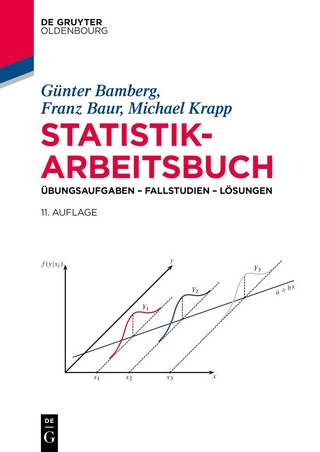
Analysis of Panel Data
Cambridge University Press (Verlag)
978-0-521-81855-1 (ISBN)
- Titel erscheint in neuer Auflage
- Artikel merken
Panel data models have become increasingly popular among applied researchers due to their heightened capacity for capturing the complexity of human behavior as compared to cross-sectional or time series data models. As a consequence, richer panel data sets also have become increasingly available. This 2003 second edition is a substantial revision of the highly successful first edition of 1986. Advances in panel data research are presented in a rigorous and accessible manner and are carefully integrated with the older material. The thorough discussion of theory and the judicious use of empirical examples make this book useful to graduate students and advanced researchers in economics, business, sociology, political science, etc. Other specific revisions include the introduction of the notion of strict exogeneity with estimators presented in a generalized method of moments framework, the notion of incidental parameters, more intuitive explanations of pairwise trimming, and discussion of sample selection dynamic panel models.
Part I. Introduction: 1. Advantages of panel data; 2. Issues involved in utilizing panel data; 3. Outline of the monograph; Part II. Analysis of Covariance: 4. Introduction; 5. Analysis of covariance; 6. An example; Part III. Simple Regression with Variable Intercepts: 7. Introduction; 8. Fixed-effects models: least-squares dummy-variable approach; 9. Random-effects models: estimation of variance-components models; 10. Fixed effects or random effects; 11. Tests for misspecification; 12. Models with specific variables and both individual- and time-specific effects; 13. Heteroscedasticity; 14. Models with serially correlated errors; 15. Models with arbitrary error structure - Chamberlain - approach; Part IV. Dynamic Models with Variable Intercepts: 16. Introduction; 17. The covariance estimator; 18. Random-effects models; 19. An example - demand for natural gas; 20. Fixed effects models; 21. Estimation of dynamic models with arbitrary correlations in the residuals; 22. Fixed effects vector autoregressive models; Part V. Simultaneous-Equations Models: 23. Introduction; 24. Joint generalized-least squares estimation technique; 25. Estimation of structural equations; 26. Triangular system; Part VI. Variable-Coefficient Models: 27. Introduction; 28. Coefficients that vary over cross-sectional units; 29. Coefficients that vary over time and cross-sectional units; 30. Coefficients that evolve over time; 31. Coefficients that are functions of other exogenous variables; 32. A mixed fixed and random coefficients model; 33. Dynamic random coefficients models; 34. An example - liquidity constraints and firm investment expenditure; Part VII. Discrete Data: 35. Introduction; 36. Some discrete-response models; 37. The parametric approach to static models with heterogeneity; 38. The semiparametric approach to static models; 39. Dynamic models; Part VIII. Truncated and Censored Data: 40. Introduction; 41. Nonrandomly missing data; 42. Tobit models with random individual effects; 43. Fixed effects estimator; 44. An example: housing expenditure; 45. Dynamic Tobit models; Part IX. Incomplete Panel Data: 46. Estimating distributed lags in short panels; 47. Rotating or randomly missing data; 48. Pseudo panels (or repeated cross-sectional data); 49. Pooling of a single cross-section and a single time series; Part X. Miscellaneous Topics: 50. Simulation methods; 51. Panels with large N and T; 52. Unit root tests; 53. Data with multi-level structures; 54. Errors of measurement; 55. Modeling cross-sectional dependence; Part XI. A Summary View: 56. Introduction; 57. Benefits and limitations of panel data; 58. Efficiency of the estimates.
| Erscheint lt. Verlag | 13.2.2003 |
|---|---|
| Reihe/Serie | Econometric Society Monographs |
| Zusatzinfo | 33 Tables, unspecified; 16 Line drawings, unspecified |
| Verlagsort | Cambridge |
| Sprache | englisch |
| Maße | 157 x 237 mm |
| Gewicht | 714 g |
| Themenwelt | Mathematik / Informatik ► Mathematik |
| Sozialwissenschaften ► Soziologie | |
| Wirtschaft ► Volkswirtschaftslehre ► Ökonometrie | |
| ISBN-10 | 0-521-81855-9 / 0521818559 |
| ISBN-13 | 978-0-521-81855-1 / 9780521818551 |
| Zustand | Neuware |
| Informationen gemäß Produktsicherheitsverordnung (GPSR) | |
| Haben Sie eine Frage zum Produkt? |
aus dem Bereich



